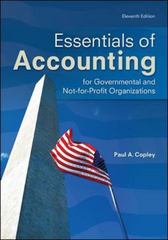Question
(a) Mr. X invested in a portfolio of risk-free asset and a risky portfolio. Mr. X's complete portfolio consists of 40% investment in risk-free asset
(a) Mr. X invested in a portfolio of risk-free asset and a risky portfolio. Mr. X's complete portfolio consists of 40% investment in risk-free asset and 60% investment in risky portfolio. Mr. Y invests 100% in the same risky portfolio. Expected return on Mr. Y's risky portfolio is 15%. Assume both Mr. X and Mr. Y are on the same Capital Allocation Line (CAL). If the risk-free rate is 5%, what is the expected return on Mr. X's complete portfolio?
(b) If the standard deviation of the risky portfolio is 20%, numerically prove that both Mr. X and Mr. Y are on the same CAL
(c) Now assume that investments in risky portfolio as indicated in (a) above are optimal for both Mr. X and Mr. Y. It is apparent that Mr. X is more risk averse than Mr. Y, since Mr. Y invests 100% of his fund in risky portfolio, while Mr. X invests only 60%. Numerically derive a value to prove that Mr. Y is less risk averse than Mr. X. You must show all relevant calculations
Step by Step Solution
There are 3 Steps involved in it
Step: 1

Get Instant Access to Expert-Tailored Solutions
See step-by-step solutions with expert insights and AI powered tools for academic success
Step: 2

Step: 3

Ace Your Homework with AI
Get the answers you need in no time with our AI-driven, step-by-step assistance
Get Started


